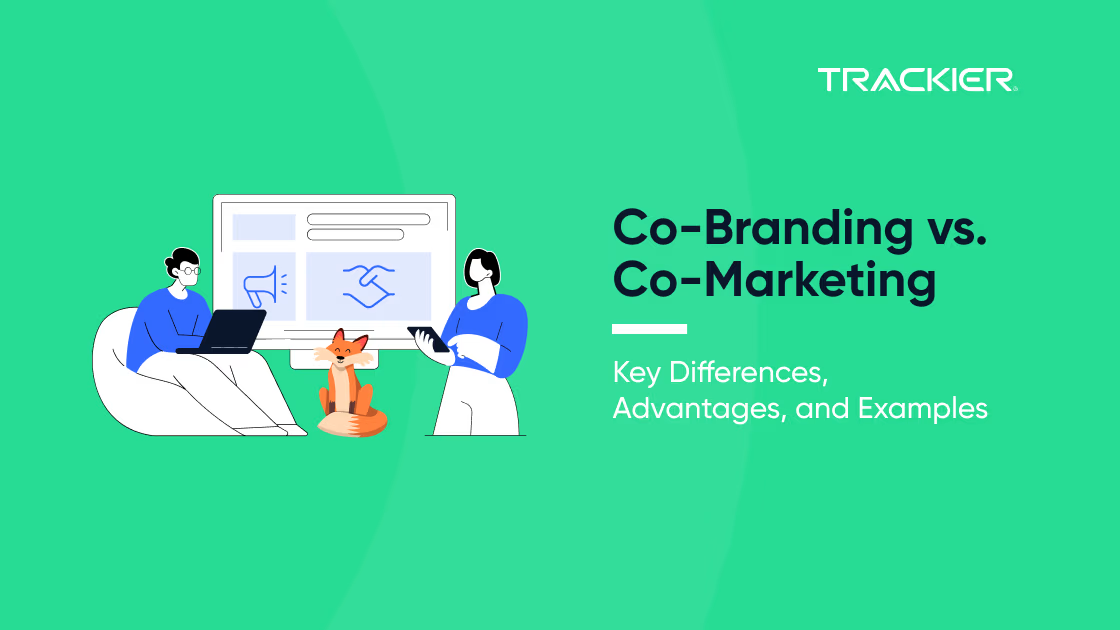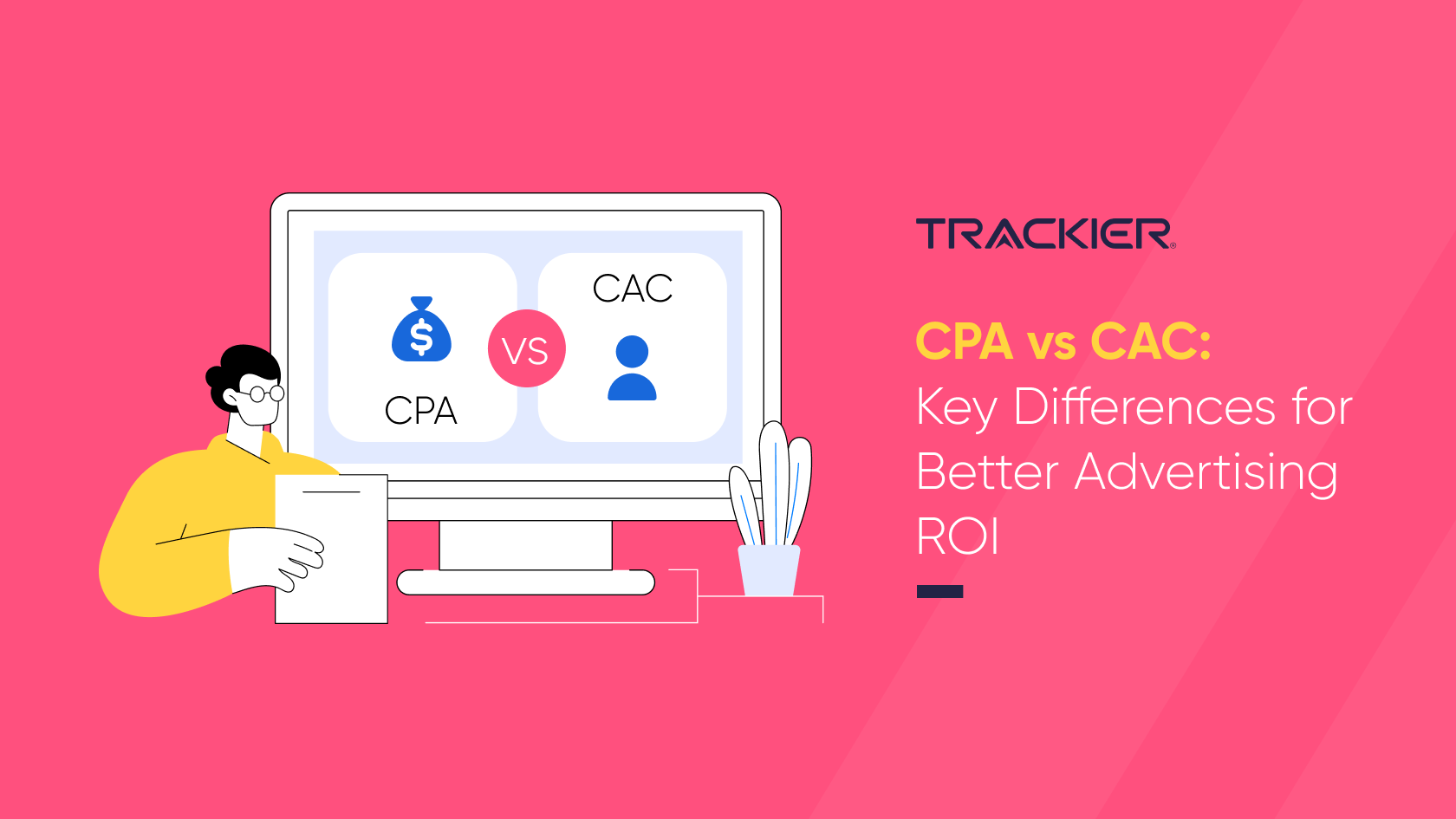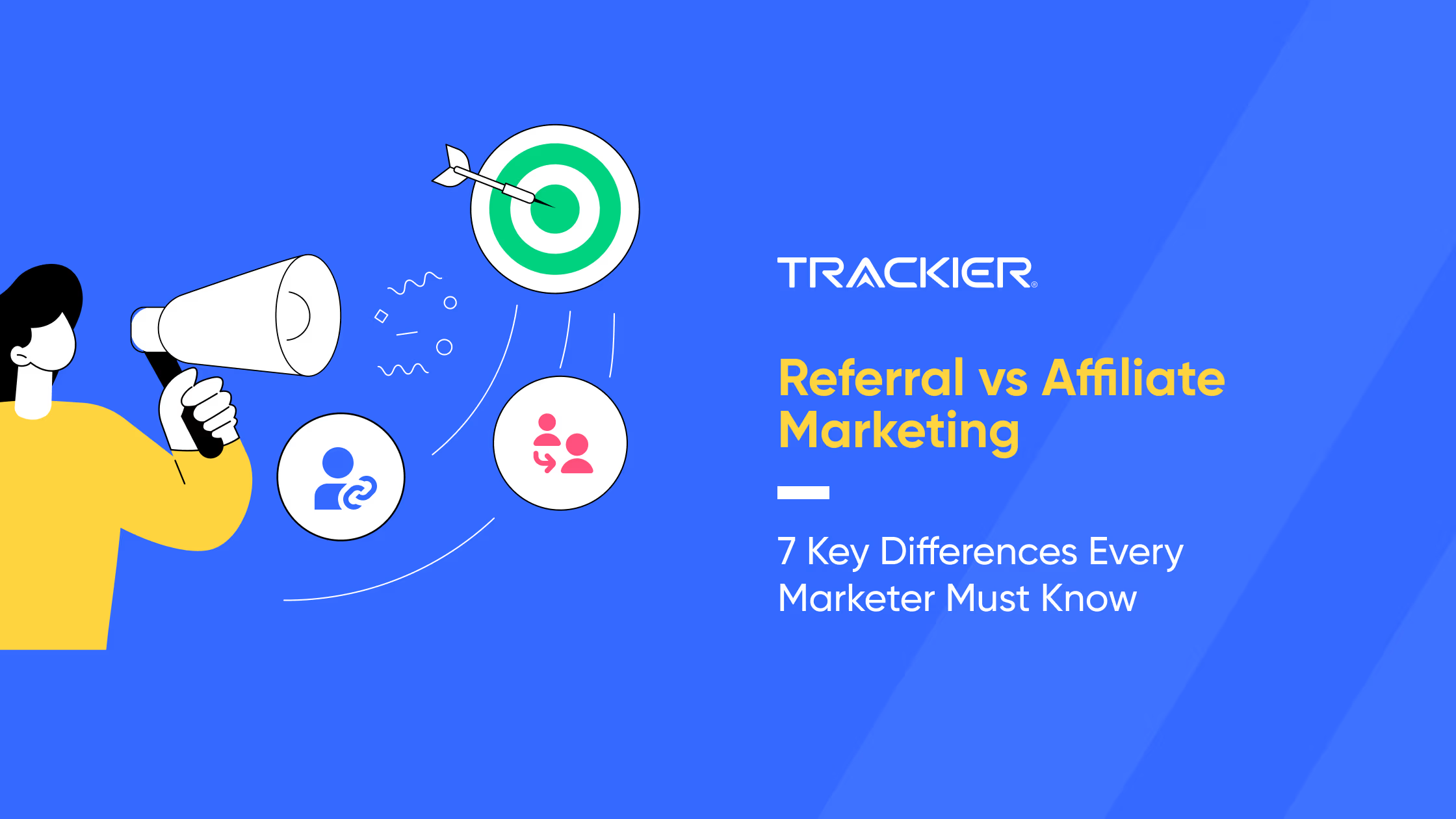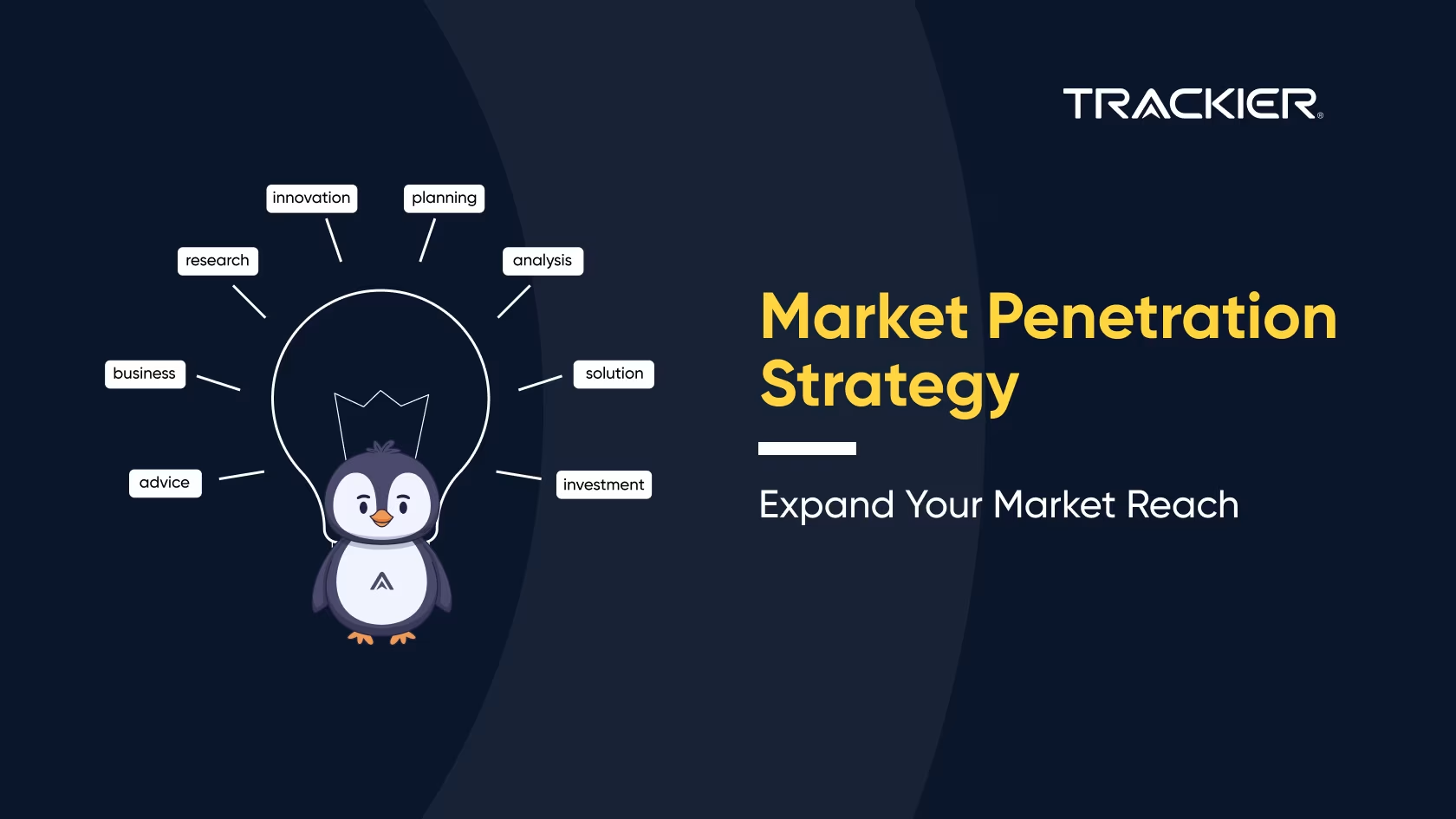Co-branding is a marketing strategy where different brands (whether it is a health supplement brand, any fitness company, or any ayurvedic business) collaborate with each other to make a new product or service (based on the key points of their customers and to try to solve them).
In co-marketing, brand partners promote their products or services to a specific audience without the need to create a new one.
These types of strategies are the best examples of how two different brands can partner to create a new product, and reach a new audience by identifying their customers’ weak points.
As per reports, 85% of businesses support a collaborative approach, also 71% of consumers are ready to try co-branded products or services.
However, without tracking the real impact of the marketing collaboration, they can not identify their actual ROI. That is where performance marketing software like Trackier assists brands in managing and optimizing their collaborative marketing efforts, accurately tracking, and measuring the real performance.
What is Co-Branding?
Co-branding is a strategy where two or more brands collaborate to create a new product or service to leverage each other’s strengths, credibility, and customer base. There are many forms of this partnership, such as:
- Co-branding of elements – One company supplies a crucial part or component for a product made by another company (e.g., Intel Inside CPUs in laptops).
- Composite Co-Branding – In this type of partnership, two brands partner with each other to create a new product that features both brand names (e.g., Doritos Locos Tacos from Taco Bell and Doritos).
- National or Local Co-Branding – To increase brand or product awareness, a local business partners with a big national brand (e.g., a regional retailer collaborating with a nationwide business). Understanding how co-branding aligns with broader brand architecture models is also important, as it ensures consistency across product lines and prevents brand confusion.
Advantages of Co-Branding
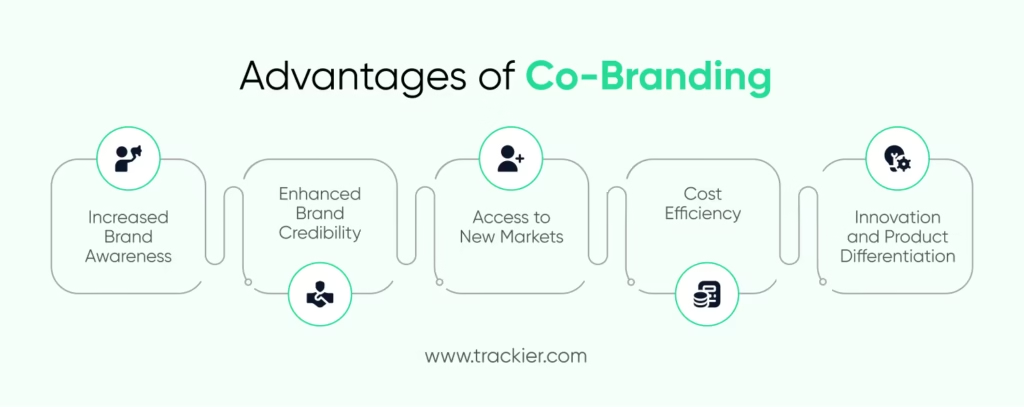
For brands seeking to increase their visibility and generate value through collaborations, co-branding provides a number of significant benefits. Some of the main advantages are:
- Enhanced Brand Awareness: By working with another brand, you might reach a new audience that might not have known about yours before, which increases brand recognition and visibility.
- Increased Brand reputation: Your brand’s reputation and reliability are increased when you collaborate with a reputable company. When a product is associated with two reputable brands, consumers could be convinced to buy it.
- Access to New Markets: Since brands are unfamiliar with the local market, co-branding allows them to penetrate new markets by determining what products to provide, how much to charge, and other factors.
- Cost Efficiency: Sharing marketing budgets, including advertising, promotions, and events, reduces costs for both brands. This also helps in getting higher ROI.
- Innovation and Product Differentiation: Co-branding helps both brands to create unique, innovative products that stand out in the market. Both brands know where they are lacking, what new products they can offer, and leverage their expertise.
Best Co-Branding Examples
As we already know how co-branding benefits both brands. Now, let’s view some of the best examples of co-branding which include GoPro and Red Bull, Uber and Spotify, and UNICEF and Target.
1. GoPro and Red Bull

Red Bull and GoPro collaborated on the “Stratos” campaign in 2012. Both businesses have partnered on an event where Felix Baumgarner, wearing a GoPro, must jump out of a helium balloon 24 miles above the ground.
Red Bull sponsored this event and invested $64.8M. If we talk about the results:
- On YouTube, the live stream gets 340 million+ views before the jump.
- N-TV (a German news channel) set a new rating record with more than 6.50 million viewers when Baumgartner landed the jump with GoPro.
- There were around 3 million tweets sent related to the ‘Stratos event.
2. Uber and Spotify
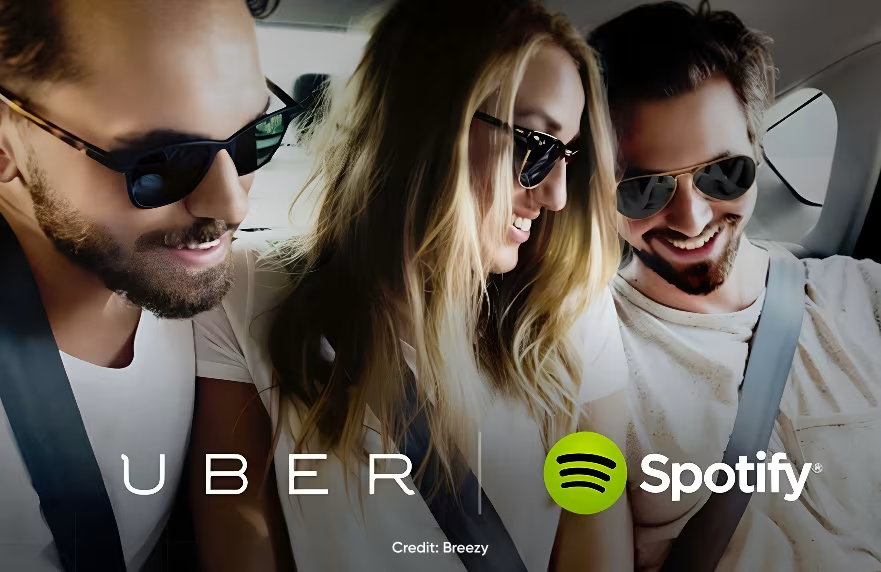
Uber and Spotify have collaborated for a campaign ‘a soundtrack for your ride’. The idea is people had to struggle to find their favorite music while waiting for their ride to arrive. To solve this problem, Uber collaborated with Spotify, so that users could listen to their favorite songs.
While it is impossible to identify how many new customers they have got. However, in the 1st quarter of 2015, Spotify reached 68 million monthly active users.
But, what can we learn from this strategic partnership?
Well, the whole branding collaboration happened to prove a better user experience by making it easier to listen to their favorite songs while traveling. This is the best co-branding example to think about your users first.
3. UNICEF and Target
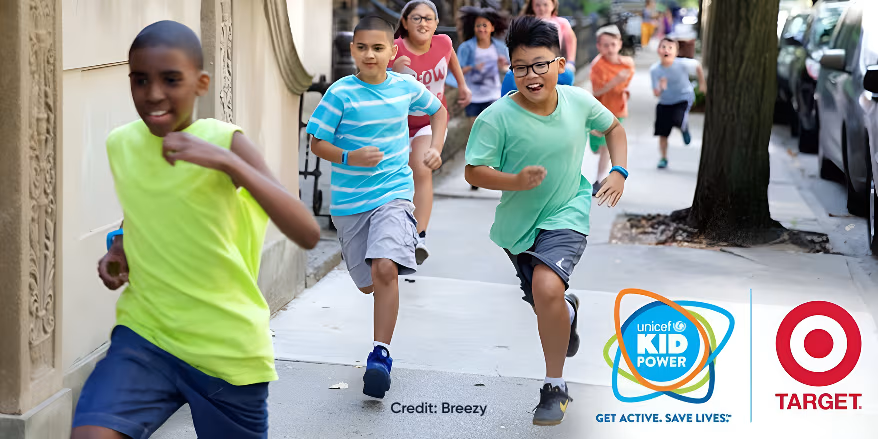
In 2015, Target collaborated with UNICEF on their ‘Kid Power’ campaign. For this campaign, Target sold kid-friendly fitness trackers to encourage them to complete the fitness activities. These activities then ultimately helped to deliver food packages to underprivileged children worldwide.
In terms of success, over 1,90,000 students took part in this co-branding collaboration. They receive more than 6.4 million packets of RUTF (a high-calorie food packet used as a treatment for severe acute nutrition) after finishing all fitness activities, which is sufficient to save 40,000 children in ten nations.
What is Co-Marketing?
Co-marketing is a strategy where two or more brands collaborate on a marketing campaign to promote each other’s products or services without creating a new one.
Each brand leverages its resources, customer base, and performance marketing channels to promote each other’s message, event, or initiative. The goal is to increase their brand visibility, marketing costs, etc.
Some of the common co-marketing types include:
- Joint Promotions: Brands create and promote advertising for discounts, contests, or giveaways.
- Content Collaborations: Brands create content (combined efforts from both brands) like blogs, eBooks, webinars, or videos to provide valuable insights and increase their combined reach.
- Email Marketing: Both brands send out co-branded email campaigns to each other’s email lists to drive traffic and increase conversions.
- Shared Events: Both brands host webinars, workshops, or physical events where both brands contribute to the event content, branding, and promotion.
Advantage of Co-Marketing
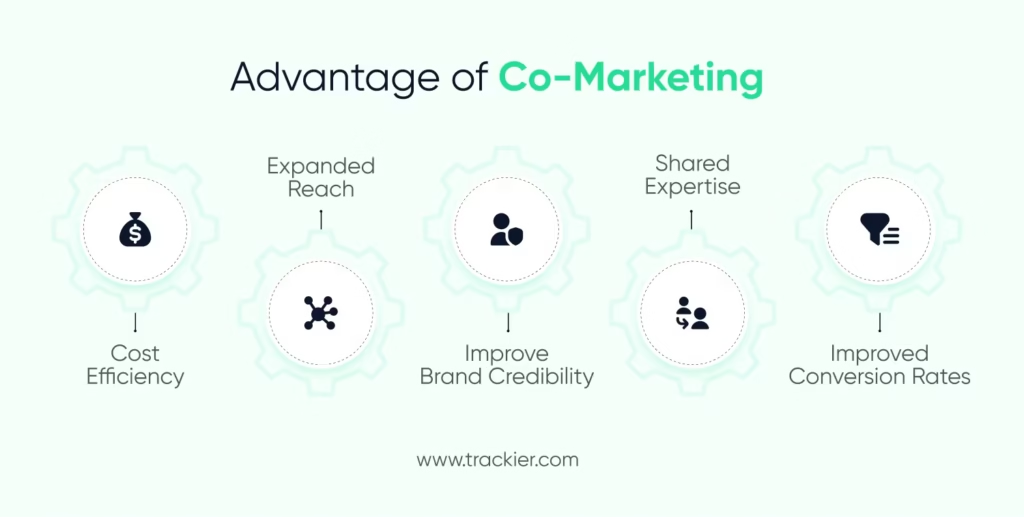
Brands looking to improve their marketing efforts may benefit significantly from co-marketing. Among the main advantages are:
- Cost-effectiveness: Co-marketing allows businesses to split the expenses of their advertising, content production, and event planning. In this way, each brand will be able to launch an effective campaign without sharing the entire financial burden.
- Increased Reach: By collaborating with another business, you can access their audience, which can help you reach new potential clients who might not have known about yours before.
- Boost Brand Credibility: You can increase your credibility by co-marketing with a well-known or respected brand. When two well-known brands collaborate to market a product or service, consumers may feel more at ease and trust it.
- Shared Expertise: Each brand brings its own unique knowledge, insights, pain points of its customers, and marketing skills. This can result in a more effective campaign that benefits from the best practices of both brands.
- Improved Conversion Rates: The trust and familiarity from both brands increase the chance of conversion like purchase, signing up for a service, etc.
Best Examples of Co-Marketing
As we already know how co-marketing benefits both brands. Now, let’s view some of the best examples of co-marketing which include Apple and Mastercard, Homesick and Lucasfilm, and Stellar Snacks and JetBlue.
1. Apple and Mastercard
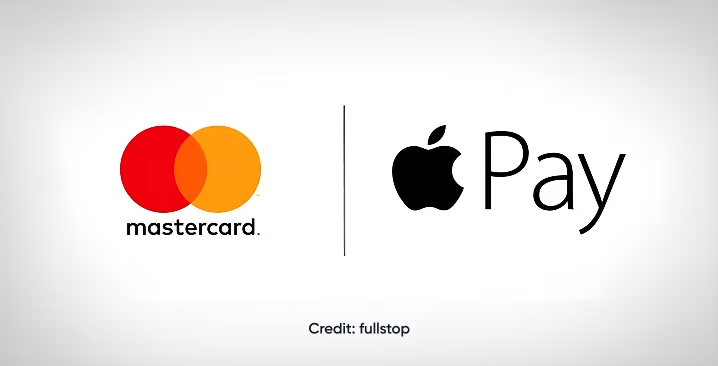
Apply Pay, a service that allows users to purchase products or services using their iPhones rather than credit cards was introduced on October 20, 2014. However, in order to use this technology, businesses have to integrate it with a credit card provider.
They collaborated with Mastercard, a multinational technology corporation in the payment sector, for this. Being the first company to let customers store their cards on Apply Pay, this partnership also helped Mastercard outperform its rivals.
2. Homesick and Lucasfilm
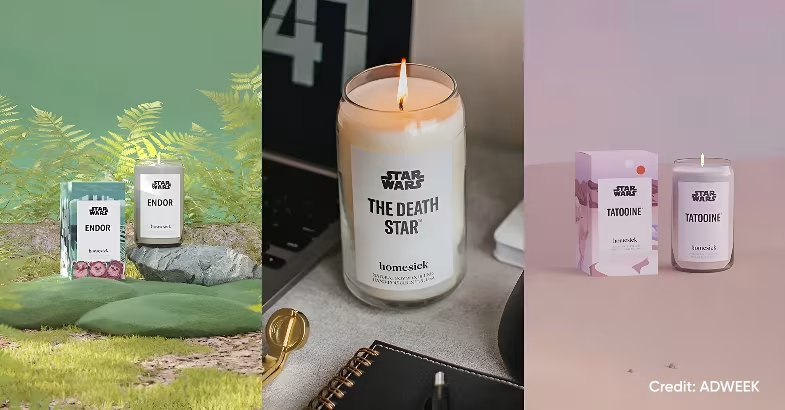
The scented candle company “Homesick Candles” is well-known for providing a variety of scented candles for various events. To create a candle with a Star Wars theme, they have partnered with “Lucasfilm”, an American film and television production firm.
The Death Star, Tatooine, and other locations from the Star Wars world are all similar in the aroma of these scented candles.
For fans of Star Wars, this was the opportunity for them to make their homes a part of the Lucasfilm franchise. This co-marketing partnership was very successful because it strengthened the brand identity of Homesick while bringing Star Wars fans together.
3. Stellar Snacks and JetBlue
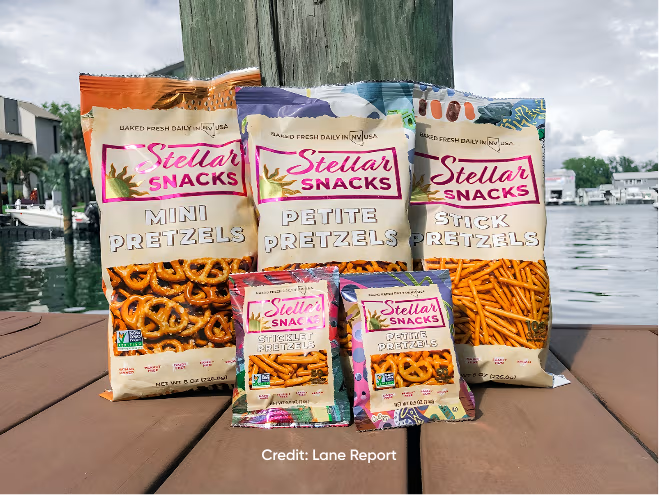
Stellar Snacks has partnered with JetBlue (a major airline in the United States). In this partnership, JetBlue provides a free snack on its flights. As Stellar Snacks was a new brand, they partnered to gain brand recognition.
It is also beneficial for JetBlue as people want to eat snacks while they fly to their destinations. However, Stellar Snacks was a relatively new company, so customers may not normally buy their products. By offering free samples, Stellar Snacks can increase their brand awareness.
This collaboration benefits JetBlue almost as much because the snacks are marketed as natural, environmentally friendly products that will enhance the airline’s reputation in the future.
Difference Between Co-branding and Co-marketing
Here’s a clear comparison of co-branding and co-marketing based on collaboration type, goal, examples, etc.
| Aspect | Co-Branding | Co-Marketing |
| Definition | Two or more brands collaborate to create a new product or service that features both brand identities. | Two or more brands collaborate to promote each other’s existing products or services without merging identities. |
| Collaboration Type | Involves creating a new joint product or service. | Involves joint marketing efforts, but no new product is created. |
| Product/Service | A new product or service that combines both brand identities (e.g., Doritos Locos Tacos). | Promoting each brand’s existing products (e.g., joint email campaigns, webinars). |
| Goal | To create a unique offering that combines the strengths of both brands. | To increase reach, reduce costs, and leverage each brand’s audience for mutual promotion. |
| Examples | Taco Bell and Doritos created Doritos Locos Tacos, Nike, and Apple with the Nike+ sports band. | Uber and Spotify offer personalized playlists, and Dropbox and Adobe co-host a webinar. |
| Brand Identity | Both brands merge their identities into a new offering. | Both brands maintain their separate identities while promoting each other’s products. |
| Investment | Requires joint product development and investment in production. | Requires joint marketing efforts (e.g., advertising, content creation) but no new product development. |
| Target Audience | Typically aimed at customers of both brands who are looking for a new and innovative offering. | Aimed at reaching the customers of both brands, often in a cross-promotion of complementary products. |
| Duration | Usually long-term or until the product is discontinued. | Short-term, tied to specific campaigns, promotions, or events. |
| Risk | Higher risk as both brands invest in developing a new product. | Lower risk since each brand is promoting an existing product or service. |
Conclusion
In summary, co-branding and co-marketing assist brands in reaching new audiences, increasing credibility, and boosting growth through strategic collaborations. But if not tracked accurately, measuring success and ROI would be difficult.
Trackier simplifies this by providing accurate performance tracking and optimization tools for marketing collaborations. Whether you’re launching a co-branded product or running a co-marketing campaign, Trackier’s performance marketing software helps you monitor results and maximize impact.
FAQs
1. What is the difference between co-branding and co-marketing?
Co-branding means creating a new product or service that includes the identity of both brands. Co-marketing refers to markets existing products together. More simply put, co-branding changes what you are selling, and co-marketing changes the way you sell it. Both are designed to increase your reach and provide credibility.
2. Why do companies engage in co-branding partnerships?
Companies engage in co-branding partnerships to use their respective strengths, share resources, and create products and services that attract attention. Co-branding also creates credibility, creates visibility, and allows brands to tap into new markets. Co-branding commonly entails the creation of something unique that attracts customers from both brands, often leading to reduced marketing costs overall.
3. Can you provide real world examples of successful co-branding?
Yes, some of the more popular co-branding examples include GoPro and Red Bull’s “Stratos” campaign, Uber and Spotify’s “Soundtrack for Your Ride,” and UNICEF collaborating with Target for “Kid Power.” Each of these examples demonstrated the way two disparate brands were able to come together to create impact in the world, reach audiences that neither brand could reach alone, and to deepen loyalty with their audience.
4. How is co-marketing different than a solo marketing campaign and why does it benefit brands?
Co-marketing allows brands to divvy up a budget, content, promotional platforms, and more while doubling their reach. Each will be able to gain access to the other’s audience, thus increasing visibility and credibility. On average, co-marketing efforts are a lower cost, and engagement, conversions, and customer trust tend to be higher than with solo campaigns.
5. What is co-marketing example that is effective?
Noteworthy co-marketing examples include: Apple’s collaboration with Mastercard on the rollout of Apple Pay, Homesick’s collaboration with Lucasfilm on the limited edition Star Wars candles, and Stellar Snacks’ collaboration with JetBlue. Each of these co-marketing efforts were able to tap into their shared audiences, create unique experiences, and create a strong brand identity without having to create an entirely new product. This demonstrates co-marketing’s flexibility and relative power.
